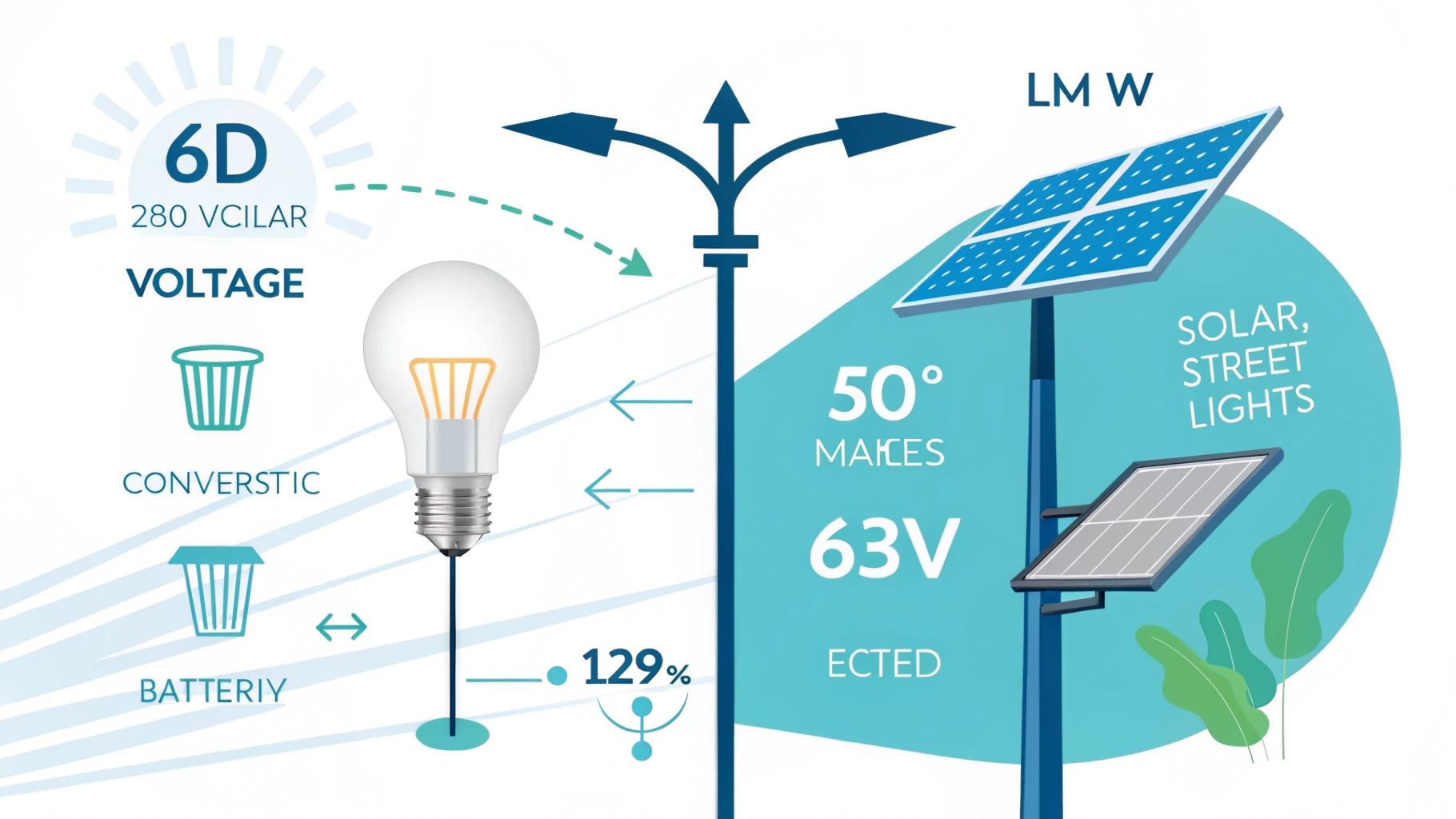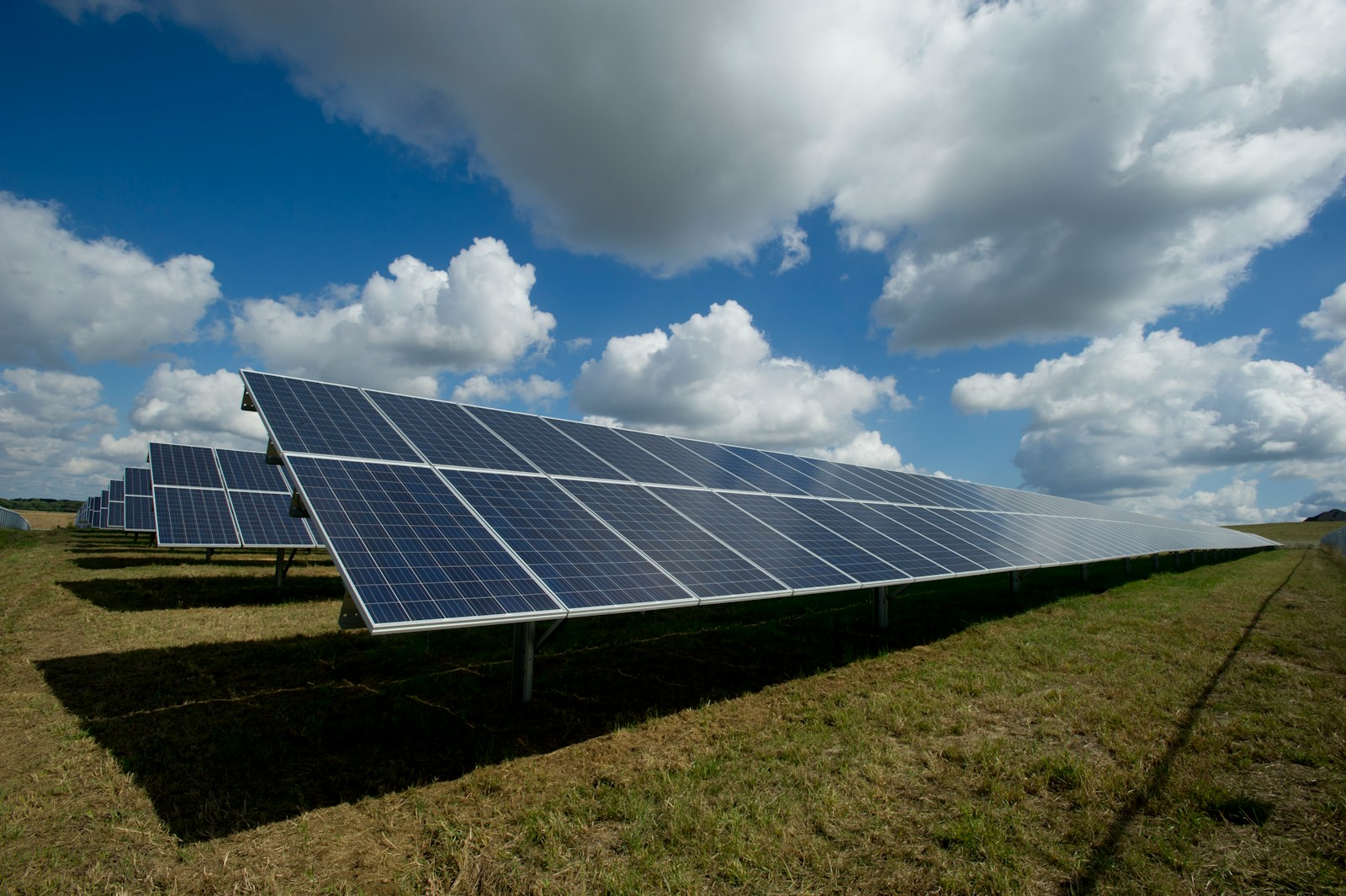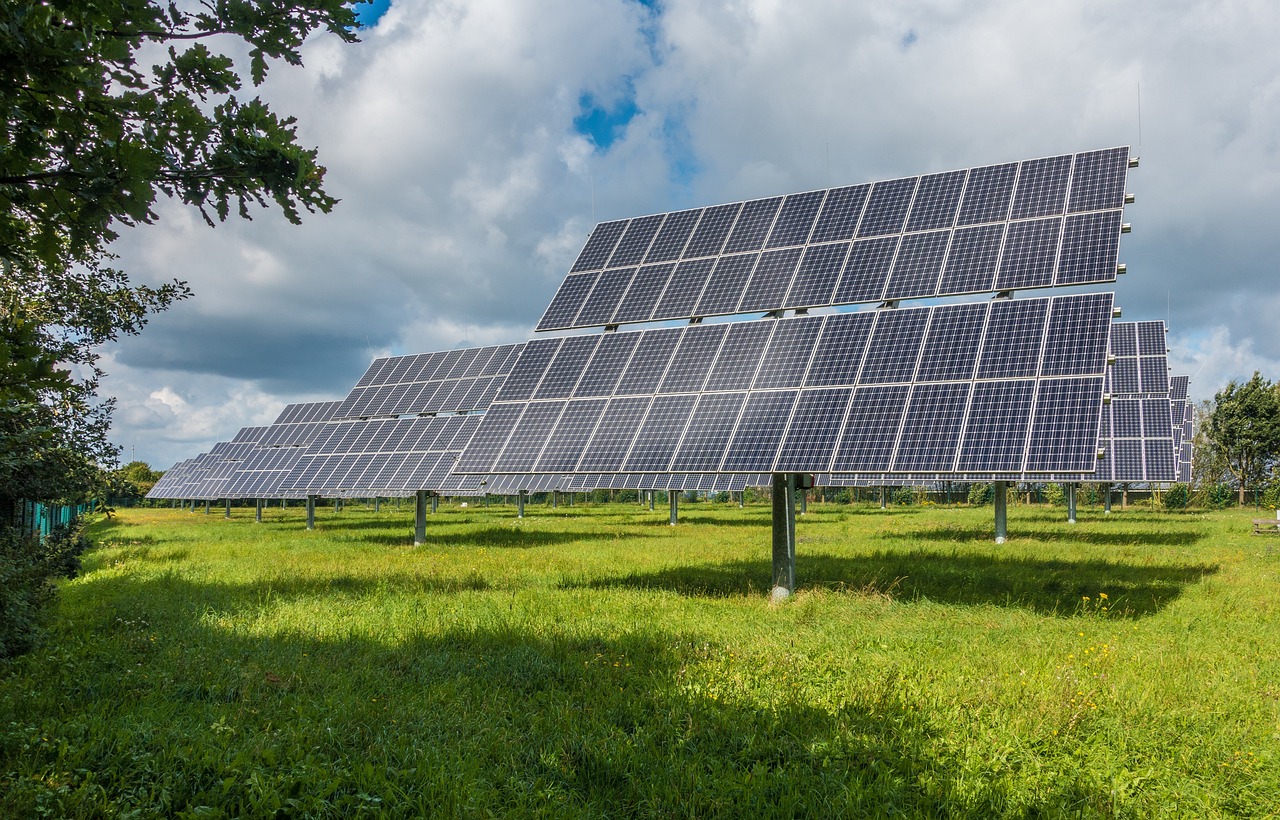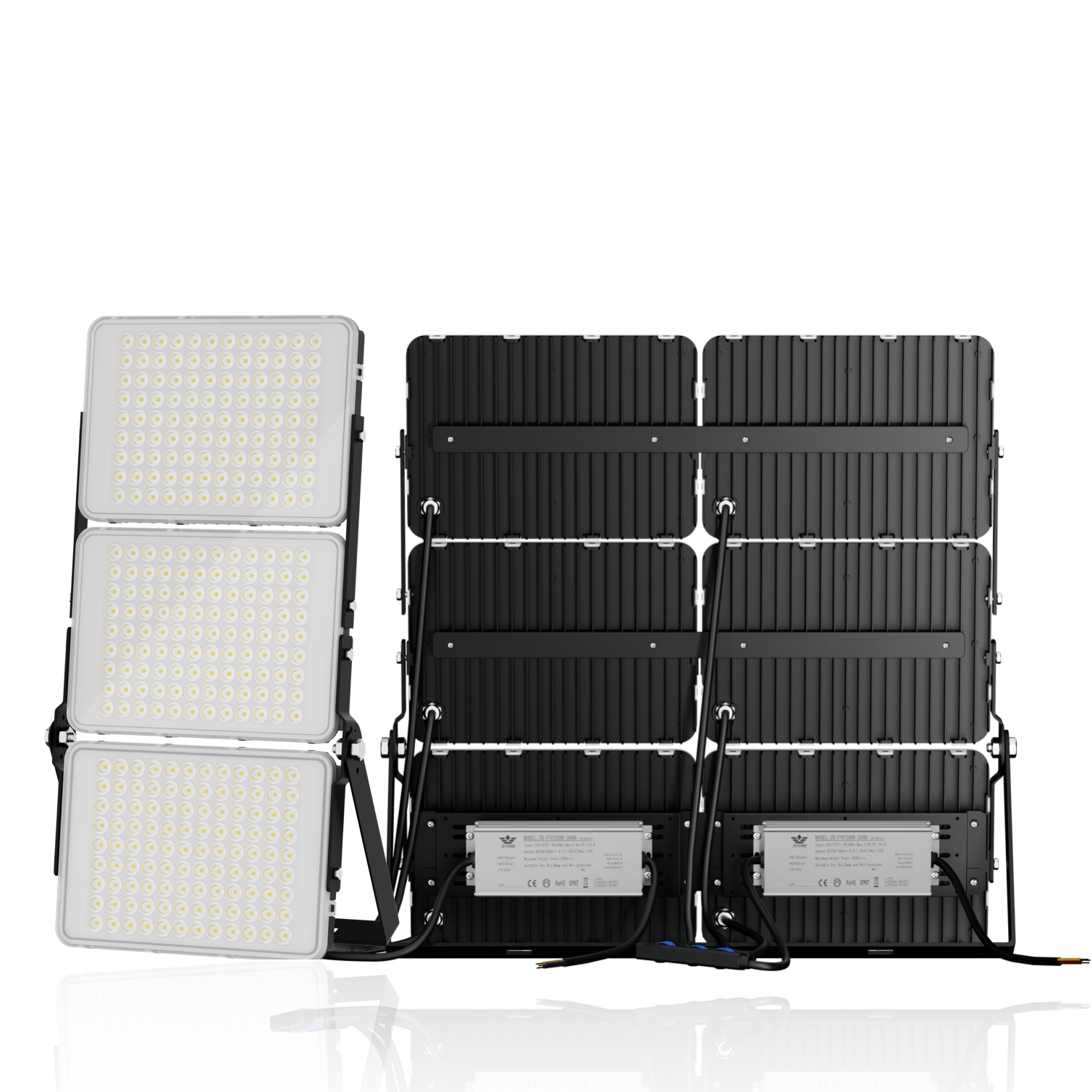As a lighting professional, I’ve seen countless businesses struggle with choosing between LED and solar lighting solutions. The decision impacts not just your bottom line, but also your environmental footprint and long-term operational efficiency. From initial costs to long-term savings, from installation complexity to maintenance requirements, each lighting solution offers distinct advantages. Let’s explore which option aligns best with your specific needs. Having worked with both technologies extensively at NINGBO EYTON LIGHTING, I’ll guide you through the key factors that influence this crucial decision. By understanding the unique benefits and limitations of both LED and solar lighting, you can make an informed choice that optimizes your lighting investment while supporting sustainability goals.
What Makes LED and Solar Lighting Fundamentally Different?
As a lighting technology specialist, I’m fascinated by how LED and solar lighting solutions represent two fundamentally different approaches to illumination. While both aim to provide efficient lighting, their core operating principles couldn’t be more distinct.
LED (Light Emitting Diode) technology transforms electrical energy directly into light through a semiconductor process called electroluminescence. This method produces instant illumination with minimal energy loss, making it highly efficient. The technology has revolutionized energy-efficient lighting, offering immediate brightness the moment you flip the switch.
In contrast, solar lighting systems employ a more complex energy journey. These systems use photovoltaic panels to capture sunlight, convert it to electrical energy, store it in batteries, and then power LED bulbs. This innovative approach to sustainable lighting represents a complete energy ecosystem, from generation to consumption.
LED lighting offers immediate, consistent illumination, while solar provides energy independence with renewable power generation.
Let’s examine the practical implications:
| Feature | LED Lighting | Solar Lighting |
|---|---|---|
| Power Source | Grid Electricity | Solar Energy |
| Operating Cost | Monthly Electricity Bills | Minimal After Installation |
| Reliability | Consistent Output | Weather Dependent |
The efficiency of LED systems stems from their direct power-to-light conversion, typically achieving 90% energy efficiency. Solar systems, though potentially offering zero operating costs, must account for energy losses during conversion and storage phases. However, they provide the unique advantage of grid independence, making them ideal for remote locations or sustainability-focused applications.
How Do Installation and Maintenance Requirements Compare?
Having installed countless lighting systems throughout my career, I can tell you that the setup and maintenance requirements for LED and solar lighting systems are quite different beasts. Let me break down the key considerations that impact your long-term satisfaction with either choice.
For LED installations, the process typically revolves around proper electrical integration. Professional electricians need to ensure proper voltage compatibility and wiring, while also considering factors like heat dissipation and fixture mounting. The good news? Once properly installed, LED systems rarely need attention beyond occasional dusting.
Solar lighting installation, on the other hand, requires a more holistic approach. As a lighting specialist, I always emphasize the importance of site assessment. We must evaluate sun exposure patterns, identify potential shading issues, and determine optimal panel placement. The success of a solar installation heavily depends on these environmental factors.
| Maintenance Task | LED Frequency | Solar Frequency |
|---|---|---|
| General Cleaning | Every 6-12 months | Every 3-4 months |
| Component Check | Annually | Quarterly |
| Battery Replacement | Not Required | Every 3-5 years |
LED systems generally require less frequent maintenance, while solar systems need regular battery and panel upkeep but offer independence from the power grid.
In my experience, the installation complexity often correlates with maintenance demands. Solar systems require regular panel cleaning to maintain efficiency, battery monitoring, and occasional component replacements. LED systems, by comparison, offer a more ‘set-it-and-forget-it’ approach, though they lack the energy independence that makes solar so appealing to many of my clients.
Which Option Delivers Better Cost Efficiency Over Time?
As a lighting cost analyst, I’ve crunched the numbers on countless LED and solar installations, and the financial picture is quite interesting. Let me break down the cost efficiency aspects that impact your bottom line.
Initially, LED lighting systems present a more attractive entry point. The average LED installation costs about 30-40% less upfront compared to solar systems. However, the long-term math tells a different story.
| Cost Factor | LED System | Solar System |
|---|---|---|
| Initial Investment | $5,000-$10,000 | $8,000-$15,000 |
| Annual Operating Cost | $200-$400 | $50-$100 |
| 10-Year Total Cost | $7,000-$14,000 | $8,500-$16,000 |
Solar lighting systems showcase their financial strength through eliminated electricity bills. The initial investment might raise eyebrows, but the absence of monthly power bills quickly adds up. Your facility’s location and energy rates play crucial roles in determining exact savings.
Solar lighting can achieve complete ROI within 3-5 years, while LED systems offer immediate energy savings compared to traditional lighting.
I’ve observed that businesses in areas with high electricity rates often see faster returns on solar investments. The math becomes particularly favorable in regions offering solar incentives or tax breaks. LED systems, while requiring ongoing electrical costs, still reduce energy consumption by 75% compared to traditional lighting, providing substantial monthly savings from day one.
What Environmental Impact Should You Consider?
As an environmental impact specialist in the lighting industry, I’ve analyzed the ecological footprints of various lighting technologies. The environmental considerations between LED and solar lighting extend far beyond simple energy consumption metrics.
LED lighting technology has made remarkable strides in eco-friendliness. These fixtures contain no toxic materials and are fully recyclable, marking a significant improvement over traditional lighting sources. Their efficient energy conversion process minimizes waste heat, reducing the indirect environmental impact from cooling needs in indoor spaces.
| Environmental Factor | LED Impact | Solar Impact |
|---|---|---|
| Manufacturing Footprint | Moderate | Higher |
| Operational Emissions | Grid-Dependent | Zero |
| End-of-Life Recyclability | 95% | 85% |
Solar lighting systems take environmental benefits a step further. By harnessing renewable energy, these systems operate completely off-grid, eliminating the need for traditional power infrastructure. The environmental impact primarily occurs during the manufacturing phase, but the operational benefits quickly offset this initial footprint.
Solar lighting can reduce carbon footprint by up to 100%, while LED lighting reduces energy consumption by up to 75% compared to traditional options.
I’ve observed that businesses increasingly factor in environmental certifications and green building standards into their lighting decisions. Both technologies support LEED certification goals, though solar installations typically earn higher points in renewable energy categories.
Conclusions
Whether you choose LED or solar lighting depends on your specific needs, location, and long-term goals. LED lighting excels in reliability and consistent performance, while solar offers energy independence and maximum environmental benefits. NINGBO EYTON LIGHTING’s expertise in both technologies ensures you’ll receive the optimal solution for your unique requirements.





